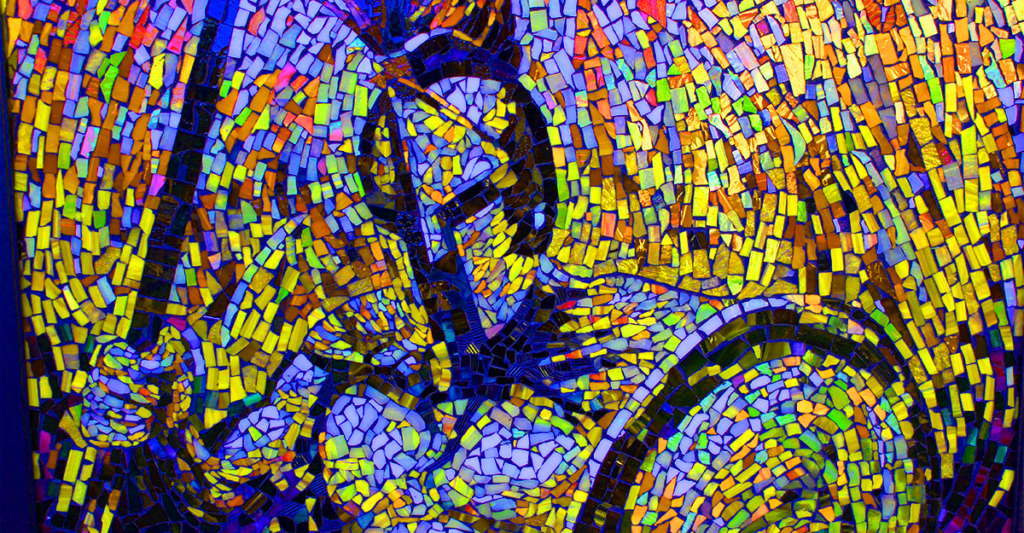“Power to the Edge” is the name of a book written by Dave Alperts and Richard Hayes which describes a shift in the late 90’s to a threat model that required that we think differently about conflict and threats to our interests. The book describes technology frameworks that can deliver small unit swarming effects in time-collapsed decision environments to more quickly respond to, make sense of, and mitigate threats. The concept has undergone many name changes since the book was written and began as “network centric warfareâ€, then asymmetric warfare, then multi-domain operations, and now “Mosaic Warfare”. Unlike a jigsaw puzzle, where pieces can only snap together with a matching piece, “mosaics” offer a pattern or image made of small regular or irregular pieces of colored stone, glass or ceramic, held in place by plaster/mortar, but can be rapidly assembled in any of a hundred other variations. Whatever the name, today’s conflicts require an IT and organizational approach to combat asymmetric threats (i.e., Al Qaeda, ISIS, etc), where ideologically driven non-nation state actors leverage chaos through small teams that strike simultaneously at multiple locations with waves of secondary attacks.
With this new threat model comes the need to shift from monolithic and legacy fighting platform designs, to a loosely coupled, but rapidly composable, “system of systems†approach to warfare.  This “Lego†set approach to capability increases survivability while enabling rapid adaptation for the good guys… while creating complexity and uncertainty for the enemy through this rapid composition and recomposition of disaggregated IoT sensors and AI swarms.  A mosaic approach treats threat as a “complex adaptive system” and leverages low-cost manned and unmanned swarming formations, flexibly networked and rapidly configured to provide hundreds of variations to capability for the operator.
When we designed and built the Blueforce platform, optimized for edge environments, we took many of the core tenets in “Power to the Edge” to heart. The Blueforce architecture enables all of this today:
- Swarming Interfaces: Blueforce enables rapid formation of human/animal, sensor, and AI/ML/data driven workgroups with processed endpoint sensor data automatically and securely synchronized between workgroup members.
- Horizontal Fusion: Blueforce eliminate IoT silos using our sensor fusion engine that communicates with, consumes, processes, and normalizes one or more person-attached and/or proximate IoT sensors. More importantly, our patented decentralized fusion engine allows fusion and sensor cueing between dissimilar sensors from different manufacturers.
- Rapid Adaptation: Blueforce enables rapid adaptation and extensibility using off-the-shelf software plugins or special purpose plugins using our readily available API/SDK. enabling agencies and commands to move from concept to capability in days for most sensors/systems.
Real-world Blueforce use cases, deployed and operational, provide the best examples for “mosaic” capability:
- Subterranean Operations: BlueforceTACTICAL running on body attached compute allows the operator to turn on a TRX Plugin for underground tracking, our Ultra Low Latency Streaming Plugin which turns the Android device into a body cam, and our MSA Altair Plugin for chemical and gas detection.
- CBRNE/HAZMAT: BlueforceTACTICAL running on body worn compute allows the operator to reuse the MSA Altair Plugin for gas detection, but also add our Thermo Fisher RADEYE PRD Plugin for gamma radiological detection, and the Wilcox PATRIOT 5510 Plugin for hybrid PAPR/SCBA monitoring.
- Sensitive Site Exploitation: BlueforceTACTICAL running on body worn compute allows the operator to reuse the TRX Plugin for interior tracking, while turning on our BLE Listener Plugin for SIGINT, but also our Cognitive Services Plugin which provides insignia ID, object ID, and a whole host of other portable machine learning algorithms which augments the core sensing of the operator.
These capabilities are only the tip of the spear for swarm technology use in decision-centric environments. Communications and coordinated activities that come about through the use of shared and swarm node resources, and/or that of the entire grouping of people and sensors, deliver dramatic impacts on operational efficiency, but also the tempo of operations.
